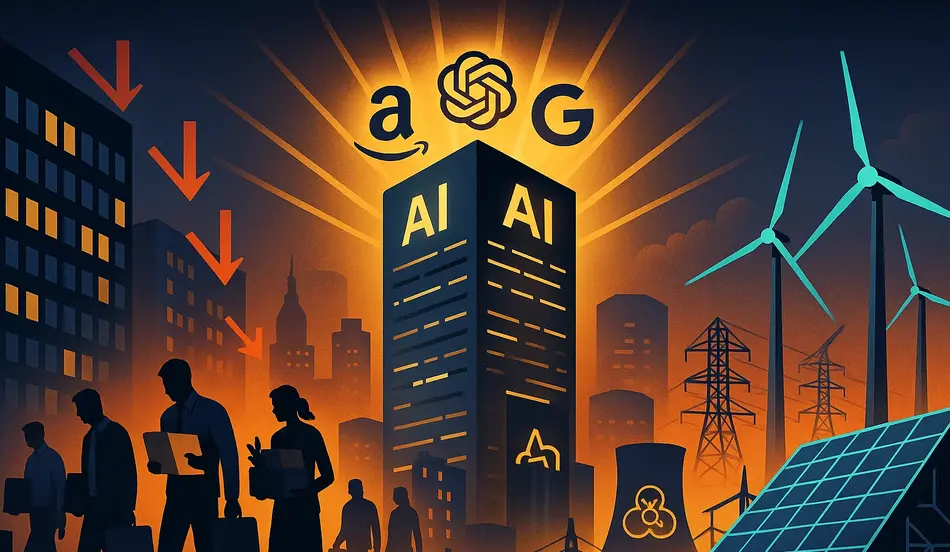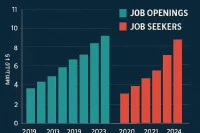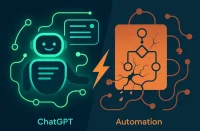Once hailed as dream jobs, positions at tech giants like Google, Netflix, and Amazon symbolized stability, innovation, and lavish perks—think free meals, on-site gyms, and even gender-affirmation healthcare. But in 2024, many are asking if this is the end of tech as we knew it. With over 124,000 layoffs across 384 tech companies in the first half of the year, the industry is recalibrating. The shift isn’t just about jobs—it’s about power, energy, and the future of artificial intelligence.
Table of Contents
1. From Gourmet Lunches to Pink Slips: The Tech Worker Reality Check
For years, the tech sector seemed immune to downturns. Employees at giants like Google or Airbnb enjoyed salaries well above national averages (over $180,000 annually in Silicon Valley), plus stock options that ballooned during the bull market.
But mass layoffs are rewriting the narrative:
- Amazon: Cut 18,000 workers across divisions.
- Google: Another wave of layoffs, totaling over 12,000.
- Meta: 11,000 jobs cut in late 2022.
- Salesforce & Microsoft: Thousands let go in restructuring.
The sector’s downturn reflects higher interest rates, post-pandemic corrections, and the AI boom, which is reshaping roles faster than companies can adapt.
“For a long time, tech companies felt like the safest place to work,” says one analyst. “Suddenly that’s been turned on its head.”
Tap Into Tech Talent Ready for What’s Next
With major tech firms cutting thousands of jobs, top engineers, developers, and digital specialists are back on the market. Post your job on WhatJobs and connect with experienced professionals eager to drive innovation at your company.
Post a Job Now →2. The Rise of Pseudo-Acquisitions: How Big Tech is Quietly Swallowing AI
While workers are being cut, tech giants are aggressively buying—or pseudo-buying—the future of artificial intelligence.
Unlike traditional acquisitions, these deals involve licensing technology and hiring away talent without outright ownership, skirting antitrust scrutiny:
- Microsoft & Inflection AI: $650 million deal, absorbed top leadership and staff.
- Amazon & Adept AI: Paid $330 million for licenses, plus $100 million retention bonuses for key engineers.
- Google & Character AI: Brought back co-founder Noam Shazeer, licensed IP, and reabsorbed staff—all without acquisition paperwork.
Critics call this “shadow consolidation.” Regulators call it a monopoly loophole. The FTC has already subpoenaed Microsoft, while Congress is weighing whether these moves stifle startup innovation.
3. The Hidden Cost of AI: Energy and the Nuclear Pivot
Every AI chatbot query costs 10 times more energy than a Google search. Training large models requires thousands of high-powered GPUs running continuously.
The International Energy Agency predicts that by 2026, data centers will consume as much power as Japan, the world’s fourth-largest economy.
To meet demand, tech giants are pivoting to nuclear energy:
- Google acquired a nuclear-powered data center in Pennsylvania.
- Microsoft struck a deal to restart the infamous Three Mile Island plant.
- Amazon committed $500 million to nuclear investments.
Support for nuclear is growing among younger generations, seen less as a Cold War danger and more as a climate solution. But risks remain: costly infrastructure, waste management, and political opposition.
4. Where Do Laid-Off Tech Workers Go?
Despite layoffs, the U.S. labor market remains strong, with unemployment at 3.8%. But many displaced workers face tough adjustments:
- 50% found jobs within 6 months, often at smaller startups or consulting roles.
- 25% shifted to fintech or other financial services.
- 30% retrained into renewable energy or advanced manufacturing.
- Women were disproportionately impacted—though they make up one-third of tech, over half of layoffs hit female employees, especially in HR and marketing roles.
The salary gap is hard to bridge. Average U.S. wages sit around $54,000, while Silicon Valley engineers still average $180,000–$240,000. Many laid-off employees are accepting lower pay for greater stability.
Find Your Next Chapter After Tech Layoffs
Whether you’re moving to startups, fintech, renewable energy, or advanced manufacturing, WhatJobs connects you with fresh opportunities. Explore thousands of roles nationwide—build stability and restart your career today.
Search Tech & Transition Jobs →5. The Bigger Picture: Tech’s Future Is Still Bright—But Different
Despite turmoil, tech remains a growth industry. AI is projected to add $2.6–$4.4 trillion annually to the global economy. Job postings in generative AI roles have surged 6,000% in 2024.
The challenge is whether innovation can balance sustainability, ethics, and workforce stability. As one economist summarized: “We’re at the end of tech’s golden age, but not the end of tech’s promise.”
FAQs
1. Why are so many tech workers being laid off?
Layoffs stem from over-hiring during the pandemic, higher interest rates, and a shift toward efficiency. Many roles—especially in HR, marketing, and software support—are also being automated by AI.
2. What are pseudo-acquisitions, and why do they matter?
Pseudo-acquisitions are deals where big tech licenses a startup’s technology and hires its key talent without formally acquiring the company. This allows them to avoid antitrust scrutiny while consolidating power in AI.
3. How much energy does AI actually use?
A single ChatGPT query can consume as much energy as running a 5W LED bulb for an hour. By 2026, data centers could double their energy use, equaling the consumption of Japan.
4. Is nuclear power really the answer for tech’s energy needs?
Nuclear provides stable, low-carbon electricity, making it attractive for AI’s heavy demand. But it comes with risks: high costs, waste disposal, and regulatory hurdles. Many experts argue nuclear must complement renewables, not replace them.




